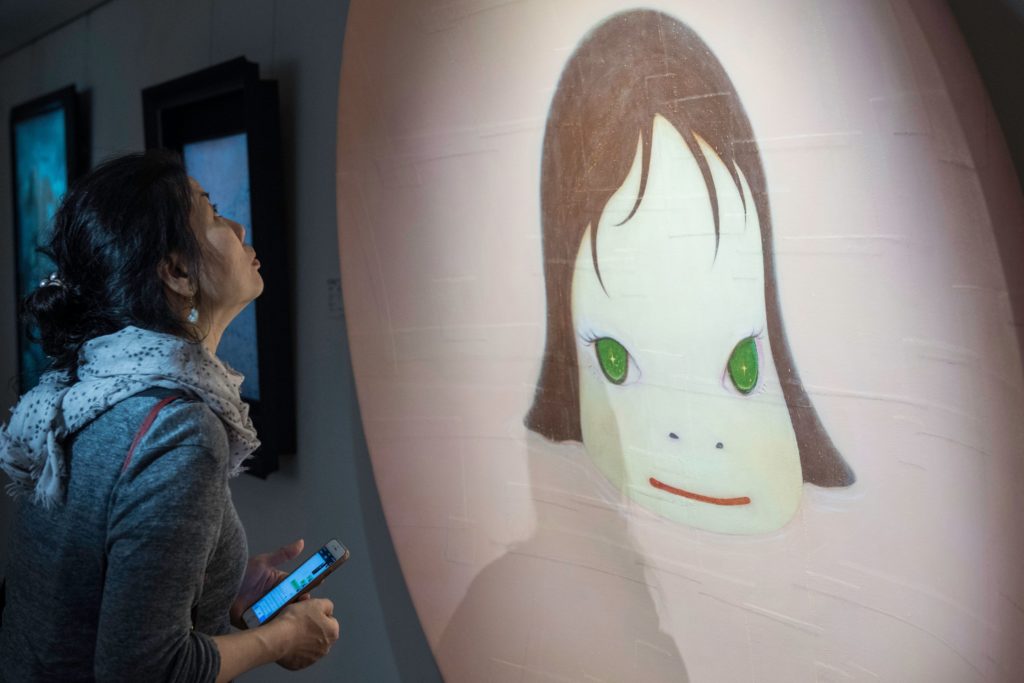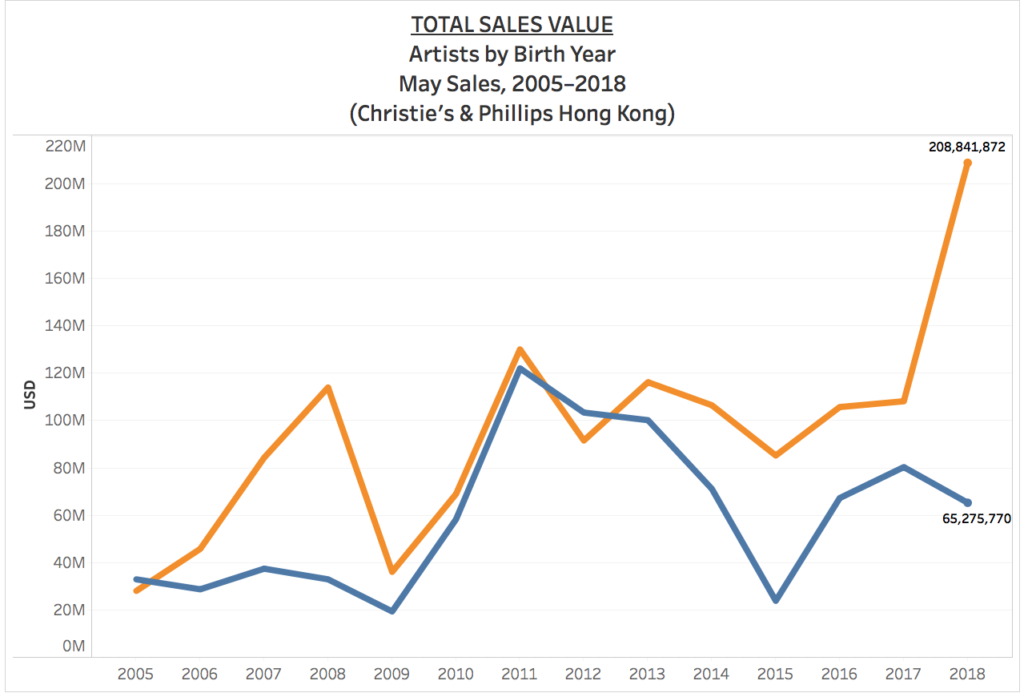Analysis
Asia Has Officially Fallen for Contemporary Art: Postwar Sales Have Doubled as Collectors Chase the Hottest Names in Hong Kong
Bidders' preference for postwar art reached an all-time high in 2018.

Bidders' preference for postwar art reached an all-time high in 2018.

Tim Schneider

With over $223 million in sales at Christie’s and nearly $30 million at Phillips’s eastern outpost, this May was a tremendous month for auctions of art in Hong Kong. But as tends to happen, the sheer volume and magnitude of the sales cycle made it difficult to pluck meaningful realities out of the whirlwind of dollar signs.
For instance, Christie’s fortunes were hitched to postwar greats like Zao Wou-ki, whose 14.12.59 (1959) sold for $22.6 million, and Jean-Michel Basquiat, whose Untitled (Orange Sports Figure) (1982) delivered nearly $9.4 million. (All figures include premiums.) But they also owed to strong performances from an older generation, led by 20th-century ink painter Zhang Daqian’s Viewing the Waterfall (1963) ($8.4 million).
Identifying which era was most responsible for the bullish results offers valuable clues about where the market in this fast-growing region is heading. Were bidders in Hong Kong continuing past trends or bucking them?
To that end, I asked my colleagues on the artnet Price Database and artnet Analytics teams to slice the results from all fine art auctions held in May at Christie’s Hong Kong and Phillips Hong Kong, from 2005 through last week, by the artists’ birth years. (I excluded Sotheby’s because their May sales over this span have focused almost exclusively on decorative art and occasional one-off collection sales.)
This method proves useful for discovering what’s happening in each of the three main fine art eras—Old Masters, Impressionist and Modern art, and postwar and contemporary. The houses have been opportunistically shifting artists between categories for some time now, meaning you can no longer be sure that the results in the database always match the stated intent of the sale. (Never forget: Salvator Mundi sold in a postwar and contemporary auction.)
To counter the shenanigans, we broke apart the artists in the sample based on whether they were born in:
Anyone without a confirmed birthdate was omitted from the data set.
To try to make the comparisons as clean as possible, I also adjusted all sales totals for inflation. After all the number-crunching, the results looked like this.

If you’re wondering why the three categories discussed resulted in a chart with only two lines, I eliminated Old Masters once I saw the data. Their sales totals never rose higher than $23.9 million, at which point they were still roughly one-third the value of the Imp-Mods and less than one-fourth the value of the PWCs.
In short, Old Masters—of Eastern and Western heritage—have basically been an outlier in the Hong Kong market for the past 14 years. If we want to look at a competitive contest in the realm of fine art, there are only two categories worth tracking: Impressionist and Modern (shown in blue) and postwar and contemporary (in orange).
What we see on the right half of this chart essentially matches what we saw in a wider-lens, shorter-term analysis of Hong Kong results in March: a strong preference for postwar and contemporary artists that announces itself around 2013. But this time, by extending our timeline back to 2005, we can also see the same preference playing out in an earlier moment, from 2006 to 2008.
The gist is this: In the past 14 May auction cycles, Impressionist and Modern art only raced neck-and-neck with postwar and contemporary for roughly the four years immediately following the 2008 financial crisis. Even in that competitive span, artists born into the Impressionist and Modern era only out-sold their eventual successors once, in 2012, by less than $12 million. While there are always many factors motivating bidders in a given sales cycle, both of these findings gel with the general “retreat to safety” usually seen in the aftermath of economic system shocks.
The other standout point here is the sharp divergence that took place during last month’s sales. It isn’t just that the postwar and contemporary artists nearly doubled in value, from about $108 million to about $209 million year-on-year against their 2017 results. It’s that Impressionist and Modern artists in 2018 took a roughly $15 million year-on-year loss while the younger generations surged through the ozone layer. This left postwar and contemporary having outperformed Impressionist and Modern art by more than 300 percent.
Now, we can safely say the results were not skewed by Phillips’s entrance to the fray in 2017, since the house offers both relevant categories in their 20th century and contemporary sales. But the disparity could be something of a one-year anomaly owing to an especially lusted-after crop of postwar and contemporary lots, including those I name-dropped earlier.
Even if that were the case, though, I suspect only the relative magnitude of the disparity would change, not the underlying trend. Why? Because postwar and contemporary has been kicking Impressionist and Modern ass in May for 12 of the past 14 years. All this helps explain why both blue-chip contemporary dealers and auction houses have been flocking to Hong Kong to promote 20th-century art with unprecedented force over the past year.
Technically, it’s not impossible that the scales could reverse next year, since past performance should never be considered a guarantor of future results. Yet given what we’ve seen since 2005—and especially in the dramatic split this year—bidders in Hong Kong’s salesrooms seem committed to reinforcing the region’s overall reputation as a place where even the recent past takes a backseat to the present and future.